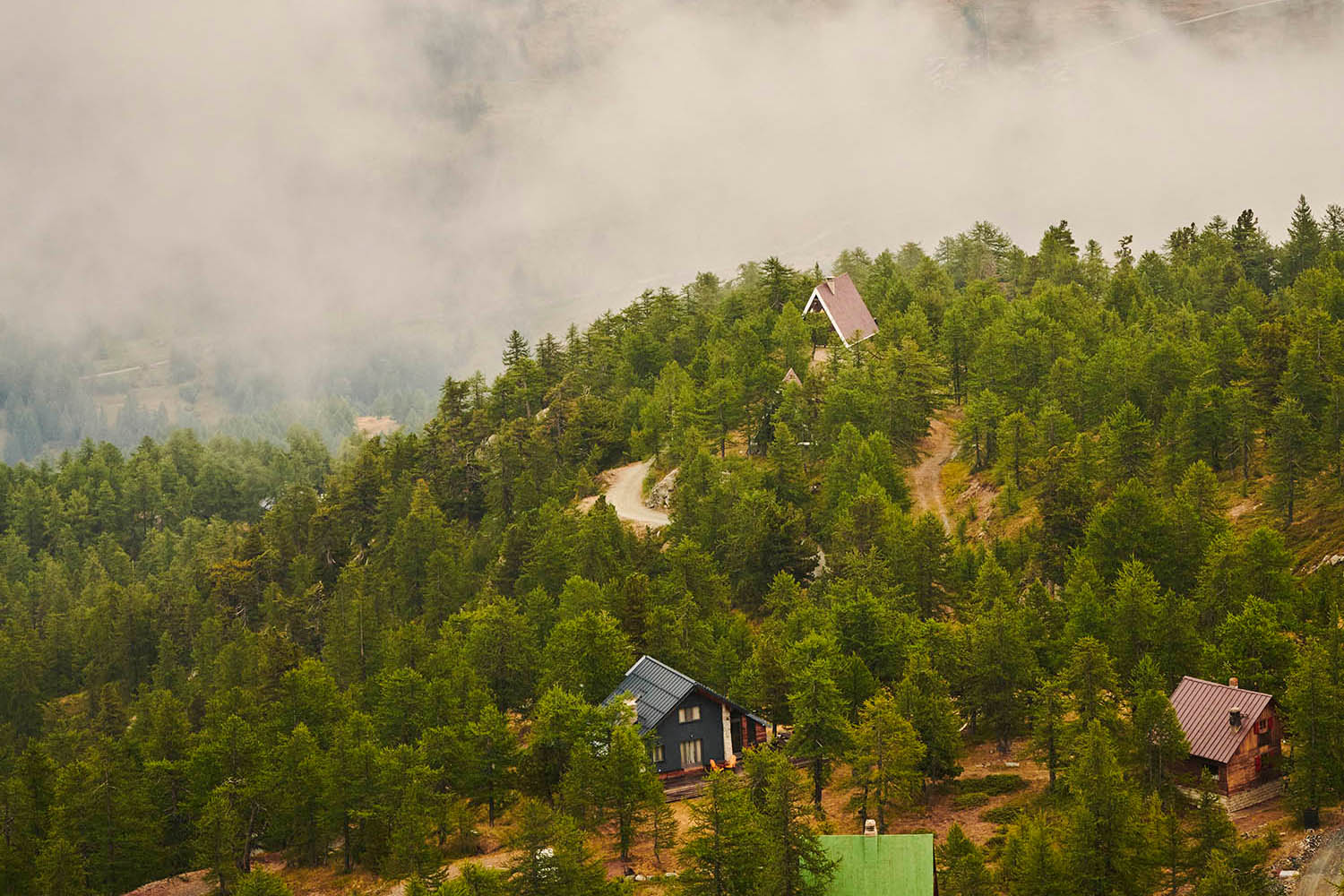Photographs by Chiara Goia
If driving up a 5km unpaved mountain road to reach a summer holiday spot seems like hard work, try coming to Sagnalonga in winter. When the snow falls in the Val di Susa, in the Piedmontese Alps, almost at the border with France, the only ways to get to this small town are via snowmobile or chairlift – carrying everything you’ll need in whatever bags you can keep hold of.
The village’s isolation is a large part of its charm, and acts as a self-selecting mechanism for the kind of hardcore mountain enthusiasts who visit. (Turin, the closest city with an airport, is just under two hours’ drive away.) “It’s a unique, magical place,” Mariasole Ballerini told me recently. “You’re at 2,000m altitude, you’re in the middle of the forest – in the summer, you’re surrounded by squirrels and birds chirping in the meadows.”
Ballerini is a former competitive snowboarder and a one-time resident of Cesana Torinese, the closest town to Sagnalonga. But she is also an architect who has dedicated a large part of her studies to cataloguing Sagnalonga’s 250 or so homes. A scattered village with no official road, square, restaurant or shop, Sagnalonga feels like it belongs to a previous decade.
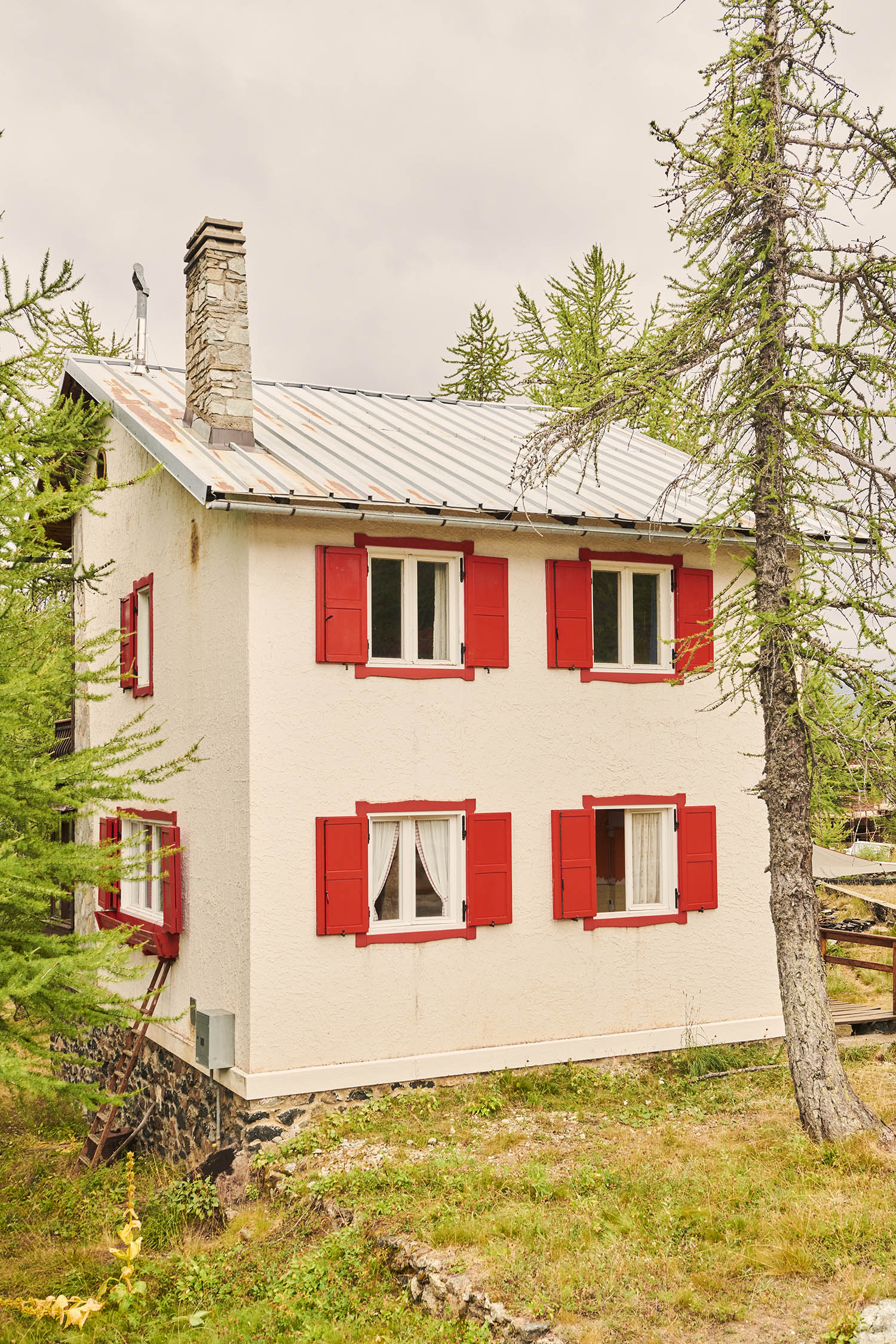
Doll’s house: red-shutters brighten a home in nearby Cesana, a village just above Sagnalonga
If it’s different to any nearby resort, from bourgeois Sestriere to popular Bardonecchia, it’s because of its homes, which have made it a draw for the architecturally inclined. Dotted between the pines, they almost hide in the landscape, their steep roofs echoing the peaks just beyond. Many of them are wooden cabins straight out of a midcentury fantasy. “As an architect I couldn’t help but wonder who built these houses,” Ballerini says, “and why they are here.”
When skiing boomed as a popular pastime for tourists in the 1950s, many towns across the Alps suffered from the construction of large, boxy hotels right on the pistes. But in Sagnalonga the plan was different. The town of Cesana started selling patches of its high-altitude land in the 1950s very cheaply, in a beautiful but quite inconvenient setting. The only condition: that houses needed to be built within the following two years. Middle-class owners could afford a second home in the mountains, but they didn’t have much cash to spare for construction, so they opted for the kind of small, simple, sometimes pre-fab structures that were popular across the Atlantic at the time: the A-frame cabin, known here in Piedmont as the formaggino or “little cheese”. A new wave of homes was built in the 1970s and, despite some variation, the aesthetic stuck, creating a local vernacular that’s hardly repeated anywhere on this side of the Alps, an area more often associated with traditional stone granges and grand chalets.
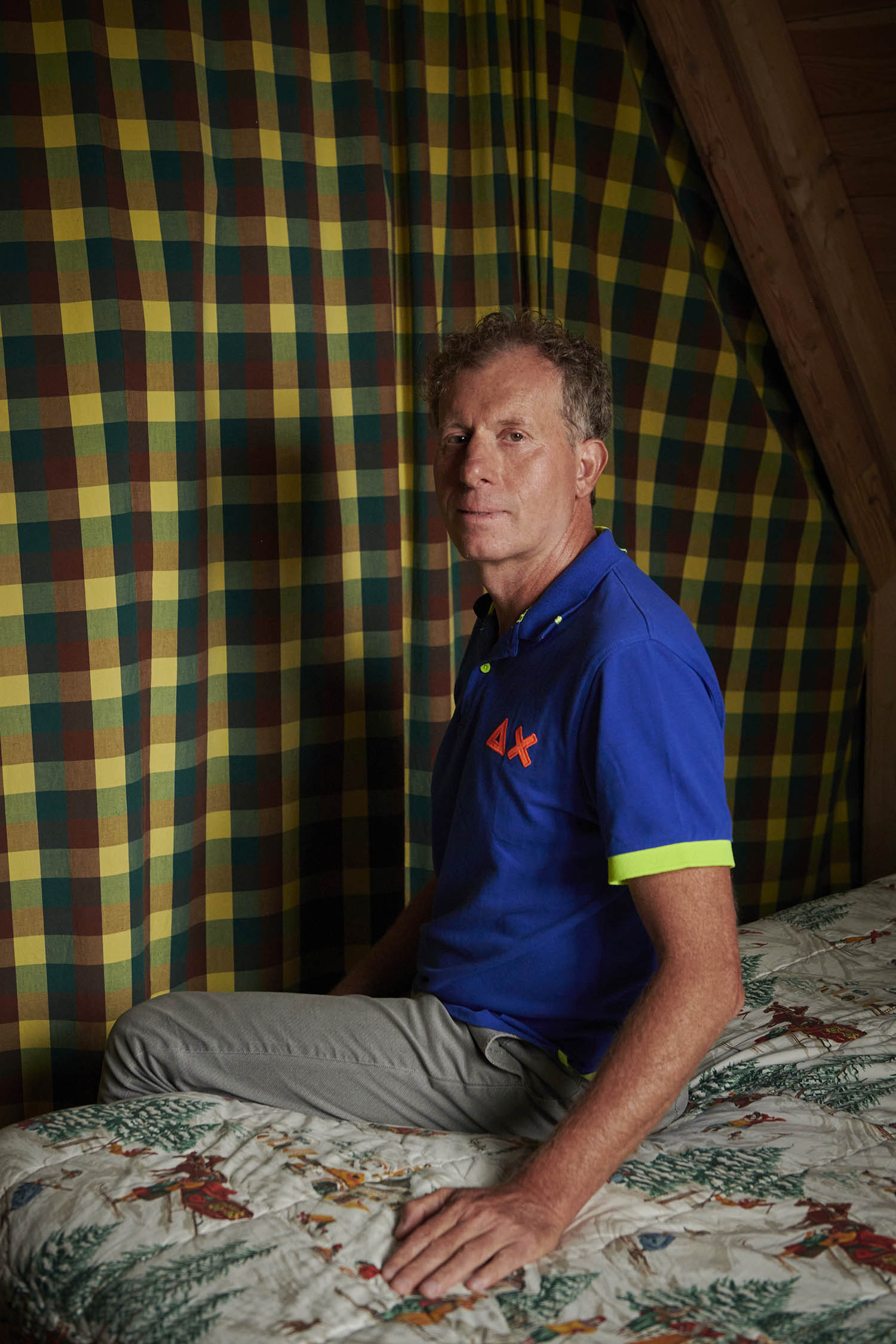
‘We used every nook’: Antonio Alvigini whose family arrived in the village in 1970
Antonio Alvigini is an engineer based in Turin who acts as the president of the local association Monti della Luna, named for the surrounding mountain range. His family was among those who arrived in Sagnalonga in 1970 and (aside from character-building winter experiences, such as wading through come on waist-high snow to reach the house, or sleeping under countless blankets with a freezing nose), he has idyllic memories of summers here. “These are my woods, these are my trails,” Alvigini told me. “I’ve known the people who holiday here since I was a kid – we practically grew up together, organising ping-pong tournaments, going on hikes, making tree-houses, playing – and we continue to play, in a way that’s proportionate to our current age, from cycling to skiing.”
Alvigini’s home is one of the most charming of the village’s petite residencies. Its pointy shape means the winter snow, which is more abundant across the Monti della Luna than elsewhere in the region, doesn’t weigh heavily on the structure. But it also makes living spaces inside the home very compact, almost as if residents were living in a boat or a camper van. When the architect Antonio Perrone was tasked with rebuilding one of the village’s structures, this became one of the project’s driving principles. “We had to build everything a little like a yacht – where space is limited and every nook must be used. It felt almost like watchmaking,” he said.
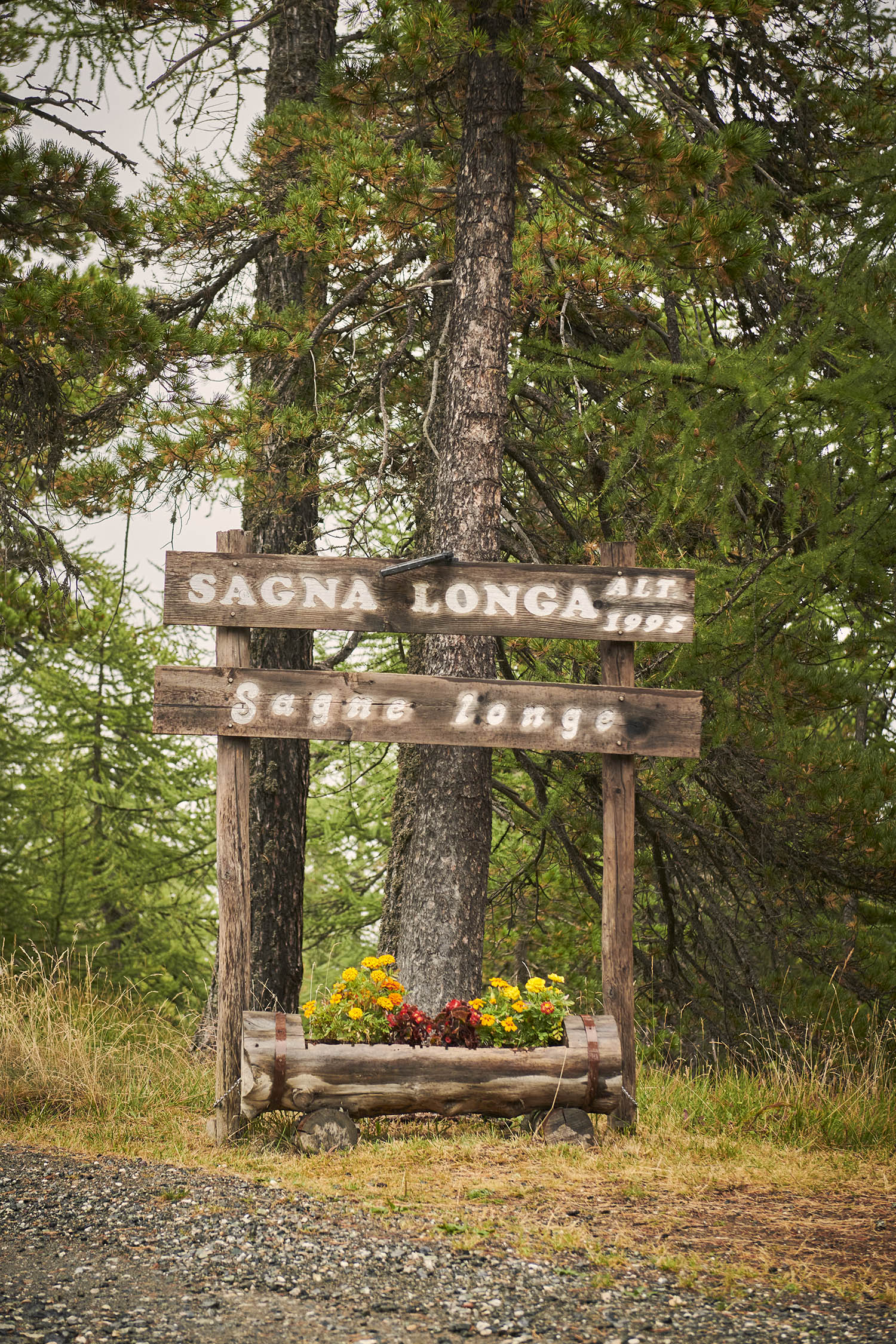
Visitors’ welcome: a sign showing the height of the town. The track is only really accessible during summer months
A sleek, angular, light-wood structure with one façade entirely covered in windows, the home was also inspired by the architect’s own memories of summer holidays. “I always thought of this context as a campsite, where instead of tents you have these structures echoing the shape of the mountain.” Perrone’s project is one of the many contemporary refurbishments bringing fresh design energy to the village while honouring and echoing its architectural heritage.
“These pyramid-like shapes sit on the landscape like little wooden spaceships,” he said. “The landscape, nature itself, is what links them together.”
The village’s lack of urban infrastructure has meant that it’s somewhat devoid of public services. Groceries must be carried up from Cesana, and larders must be stocked in advance. However, exceptional mountain huts, such as Capanna Mautino and Baita Gimont, are reachable on foot via hikes that will make the cheesy polenta waiting at arrival more rewarding. Trails also lead to pristine lakes for summer swims, and the village is directly connected with the surrounding skiing pistes, so in winter all it takes is to strap on boots and skis and head outside.
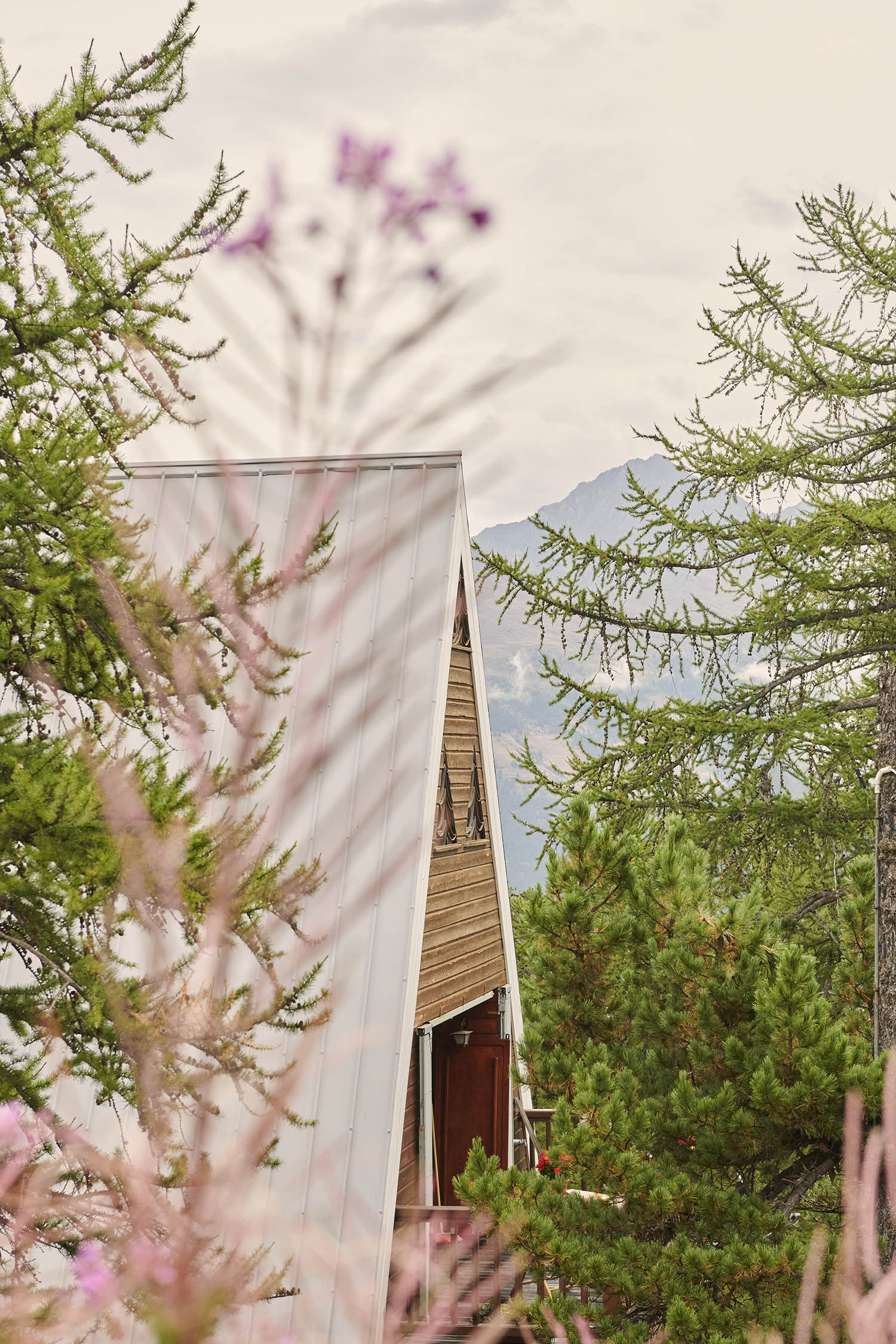
Pitch fever: the sharply inclined roof means that snow doesn’t gather and add weight to the wooden house
For decades, Sagnalonga was home to a single hotel – the Sport Hotel – which progressively fell into disarray. The good news is that architect Piero Boffa (whose family has had a house here since 1989, fully refurbished into an impressive, environmentally friendly villa in 2018) has recently taken over the contract and plans to revive this hospitality stalwart. “The community was deprived of a meeting point,” said Luca Boffa, Piero’s son, who now runs the family architecture studio in Turin with him. The Boffas are not the only design professionals to have chosen Sagnalonga for their holidays: more architects, a famous automotive designer and a renowned entrepreneur are also part of the community, which over the years has also grown to welcome the occasional Belgian, French, English and American visitor to its well-kept Airbnbs.
“The people who come here are those who are after a unique place where you feel serene and at peace,” Boffa said. “It’s not St Moritz, it’s not Courmayeur. You might live in a rush for the whole year, but when you come here, you slow down, there are no formalities. Over the years, you get to know everyone, you have dinner at each other’s houses, go on walks, watch the stars. We live in nature – but together.”
High times: Mountain living in Sagnalonga
Stay The only accommodation option in Sagnalonga itself is its Airbnbs, but nearby towns have pleasant hotels. In Cesana, Hotel Chaberton was founded in 1914 by the same family that runs it today. The rooms have been given a modern spruce-up, but the wrought-iron staircase is original (hotelchaberton.com). Hotel Bes in Claviere is a four-star option complete with spa. All rooms are outfitted with Alpine-style wooden furniture, though the executive option is the most vintage and charming (hotelbes.com).
Eat The young new owners who took over Capanna Mautino close to Lago Nero in 2024 are renovating this mountain refuge, but plan to reopen soon to continue serving hearty polenta, abundant cheeseboards and Piedmontese desserts. Stay in bunk-beds or rustic doubles (capannamautino.it). Baita Gimont, a little further north, has a menu that borrows both from the Mediterranean and cross-border Alpine tradition – pasta and cheese fondue. A post-lunch nap on the sun terrace is encouraged, though there are six rooms if you also want to hang around longer (gimont.eu).
Visit Lago Gignoux, immersed in a lunar landscape, is also known as Lago dei Sette Colori or the Seven Colours Lake because of the spectacular hues of its waters, from light blue to green. The hike here also leads past the resplendent Lago Nero and its pretty, rural chapel.
